The collapse 12 months ago of Quinn sent shudders through the British and Irish insurance sectors. But, as the fate of the beleaguered firm remains uncertain, it seems brokers and insurers have escaped relatively unscathed
Happy St Patrick’s Day. Happier than last year, anyway, when the financial empire built up by Ireland’s richest man teetered on the brink of collapse – with huge implications for the insurance industry on both sides of the Irish Sea.
Today, Quinn Insurance is on the brink of a sale, to be rubberstamped by the newly elected Irish government. But the UK market is still dealing with the ramifications of its dramatic demise. As the insurer’s annus horribilus draws to a close, Insurance Times asks just who the winners and losers were in all this.
First, let’s recap some of the major talking points. Almost 12 months have passed since that fateful day when administrators stepped in at Quinn Insurance, following intervention by the Irish Financial Regulator.
On 30 March 2010, financial regulator head Matthew Elderfield ordered Quinn Insurance UK to stop writing new business, after the Irish High Court appointed provisional administrator Grant Thornton.
The empire built by Sean Quinn was about to be turned upside down.
There were major fears over Quinn’s solvency and its aggressive pricing, particularly in the UK market, which prompted questions over its ability to pay claims. “The effect of this action is to prevent Quinn Insurance suffering further financial losses from its currently unprofitable UK business,” said the regulator.
Quinn’s UK book was split into personal lines motor, through its Quinn Direct brand; and its commercial broker business consisting mostly of construction, liability and professional indemnity insurance.
As Quinn’s UK operations came to a standstill, customers were assured their policies were still valid and that claims would be paid.
The UK market moved quickly, despite the future of the business still being unclear. Insurers began offering brokers a home to place their Quinn books of business, as some clients demanded an immediate change.
In the subsequent weeks, Quinn Insurance was placed into full administration. It was given the green light for a partial return to the UK, insuring provisional drivers, and later all drivers. However, the rest of the business remained under investigation.
A month after the administrators moved in, it was forced to axe 900 staff across the entire Quinn Insurance business, which once boasted 2,452-strong workforce. Shortly afterwards, chief executive Colin Morgan left the business.
The writing was on the wall for Quinn when regulators blocked its re-entry into the UK commercial lines space, stating that it did not have enough capital to run the business.
Attention then turned to the sale. Insurers including RSA, Allianz and Zurich were all touted as prospective buyers. However, a sale is yet to be completed.
What happens next?
Quinn’s administrators continue to work on the sale. Two bids are believed to be in the running: a joint approach between Anglo Irish Bank and Liberty Mutual; the other from Zurich.
The election of a new government in Ireland has delayed the bidding process, as any sale would need to be agreed by the National Treasury Management Agency (NTMA) and the finance minister.
With the political situation in Ireland now stable, the deal is expected to be announced imminently. But Quinn Insurance’s administrators told Insurance Times: “The administrators have completed their work, but there are a number of matters that need to be finalised by other parties before a decision on the sale can be announced.
“The administrators cannot to go into any of the details associated with the bids, as to do so may impede their ability to deliver a good deal for the company and its staff. As soon as they have the required answers to the matters outstanding, they intend to announce the details immediately.”
The administrators refused to comment on the future of the UK business in the sale, but added: “[We] are satisfied that the UK business being underwritten since our administrators appointment has been profitable.” Quinn only writes private motor business in the UK.
But the Quinn family has not given up hope of pulling off an eleventh-hour deal to keep its business, according to press reports in Ireland. The proposal could see all profits generated by Quinn Insurance over the next seven years, along with proceeds from a sale or initial public offering, go directly towards paying off the €2.8bn (£1.75bn) the family owes Anglo Irish Bank.
The regulator could also have a say in the sale. In a statement, it said: “Any bid to purchase the business is, in the first instance, a matter for the administrators.
“However, depending on the structure of any deal, Central Bank of Ireland approval may be required. The administrators keep the Central Bank of Ireland appraised of developments. No formal proposals have been received.” IT
The brokers’ story
For brokers with large accounts of commercial business with Quinn, including Giles Insurance Brokers (up to £12m) and Kerry London (about £8m), Quinn’s downfall prompted immediate action. Giles’ group operations director Richard Corner explains: “It became an incident that was managed by pulling together a team of people from across the business because of the potential severity of the incident. It was tightly managed.”
Giles’ managing director Sarah Lyons headed the mini-crisis team. “In the first few weeks, we were meeting daily to work out the implications, the likely impact on our clients, the sort of fall-back position we should be offering them and, indeed, how we should manage the situation through the administration process,” says Lyons.
Crucial to brokers was how they dealt with concerned clients. A knee-jerk reaction could have sparked a wave of immediate actions.
“One of our immediate concerns was how we made sure we didn’t create unnecessary panic among our clients while we were trying to establish what the position was with Quinn,” says Corner. “The overriding concern was to make sure clients were on cover, claims were being paid and that the cover would continue and remain robust.”
The other challenge for brokers was finding new markets to re-write Quinn business immediately, as well as renewal business. Quinn’s aggressive pricing meant clients were facing more expensive premiums.
“We had capacity available to soak up the business we had with Quinn,” says Giles regional managing director Sean Finnegan. “Our exposure with Quinn was more around construction-type business. It wasn’t a huge exposure, and we were able to accommodate that within our Ink Underwriting markets and other preferred providers, by and large.
“I don’t think from a client perspective it had a massive effect. The book that we did have, we were able to replace relatively easily.”
LFC Insurance had a small book of high-risk business with Quinn. Chairman Simon Clayton says: “The impact on us was minimal. We were able to place everything we had with them quite easily.”
Kerry London declined to comment on its Quinn business.
The insurers’ story
Quinn’s UK commercial is thought to have been worth between £350m and £500m in gross written premium (GWP). Major players in the UK market, including Aviva, Zurich and AXA, scooped business from Quinn. The rest was spread around specialist markets in Lloyd’s and offshore.
Aviva picked up £25m to £50m of Quinn business. Partnerships and intermediaries director Janice Deakin says: “We were active in that market, but also keen to pick up quality business. We worked with a lot of brokers. We wanted to be helpful and do what we could, but had an eye on the quality of the business that we could pick up.”
The bulk of the business it won was commercial liability, including specialty business. Deakin says: “We looked at it in exactly the same way we look at every case. We might have said, ‘if this is not ideal now, can we look at it over the next two or three years’. We would price a piece of business based on our claims and underwriting philosophy.”
Zurich says it has written about £2m of Quinn business over the past year, including selected schemes and facilities in commercial, predominantly liability.
Commercial Broker managing director Dave Smith says: “We told brokers at the time that we would be there if they wanted us. That was always our stance, because we’re quite active in portfolio transfer and quite skilled at it. We selected in accordance with our underwriting principles and we picked up two or three portfolios or cases that we thought were relevant for our portfolio.”
Smith says there was no significant impact on commercial rates when Quinn’s account were being snapped up. “It was a ripple in the ocean of capacity. In terms of rate, I wouldn’t say there was any impact because of Quinn.”
He suggests the majority of the Quinn book was placed outside traditional markets. “It was probably lucky it came up at a time when there was significant capacity in the market.”
Liechtenstein-based insurer Gable says it increased its construction book by about 11% with Quinn business. Chief executive William Dewsall says: “We did write some Quinn accounts, but on Gable’s terms. You’d have to be a lunatic to write business on Quinn’s terms. Overall we increased our construction portfolio by about 11% (about £1.5m GWP). Nothing tremendous because the business was so massively underrated.”
He claims Quinn’s book was undervalued by 100%-125%. “We probably got 20% of the business we quoted and the rest went elsewhere. I can’t have a risk worth £50,000 and Quinn are pricing it at £10,000 and someone wants me to write it at £15,000. I’m just not going to put myself in the same position as Quinn by ridiculous underwriting.”
He says that some insurers in Lloyd’s write Quinn risks “far more competitively”.
Impact on the PI market
When Quinn announced it was pulling out of the solicitors’ professional indemnity (PI) market after going into administration, law firms looked worried.
Quinn was a key player in the market, writing premiums of £24.5m in 2009. This gave it almost 10% of the market share and made it the fourth-largest PI insurer.
Quinn’s withdrawal sparked concern among qualifying insurers about the future of the assigned risks pool (ARP). A spokesman for one qualifying insurer said the prospect of nearly 3,000 law firms looking for cover led many market insiders to predict soaring numbers of law firms falling into the ARP and soaring costs to qualifying insurers as a result.
Fortunately, the Law Society helped by stepping in and deciding not to call an insolvency event on Quinn’s UK operations. If it had not done so, Quinn’s 2911 law firms would have had one month to find alternative cover or fall into the ARP. Because it did, Quinn continued to act as a qualifying insurer until its clients’ policies expired.
The number of firms that eventually fell into the ARP in 2010 was 295, not many more than the 274 firms in 2009 and certainly below the predictions of about 700 coming from some insurers and brokers.
The capacity was picked up by insurers such as Inter Hannover and Lemma Insurance, Vision Underwriting and Alpha Insurance, who came in as newcomers, and Ink Underwriting, which increased its PI book by about 50% with Quinn business after securing new capacity from Greenlight Re. Aon and Travelers also swooped in with schemes.
Clear Insurance Management professional risks director Daniel Innes says Quinn’s exit from PI would only have hurt the brokers that put a lot of business with them, and adds: “Quinn’s area of the market was at the smaller partner number end, so that made it difficult because there was limited appetite or markets for the smaller firms in the 2010 season.”





























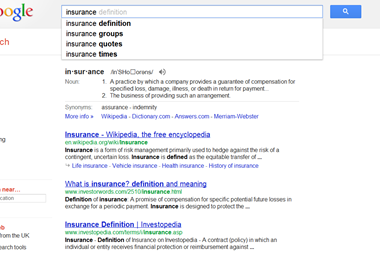
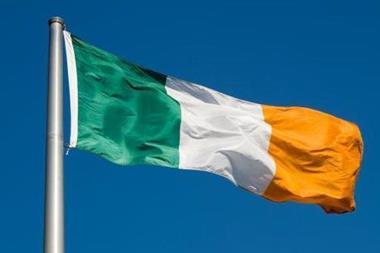
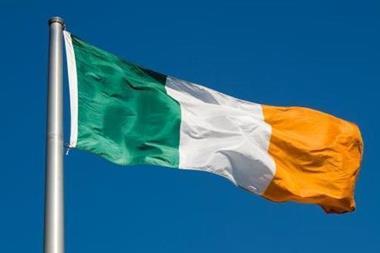
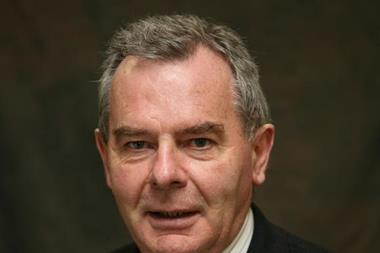

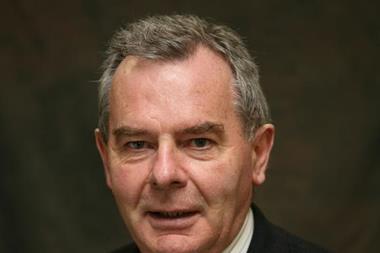



No comments yet